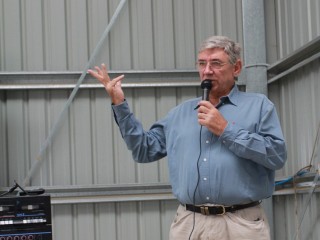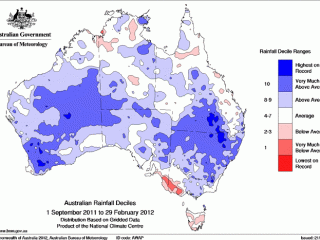 The unfolding outlook for supply and demand has prompted a word of caution about grassfed cattle prices in coming months from one of the red meat industry’s most experienced operators.
The unfolding outlook for supply and demand has prompted a word of caution about grassfed cattle prices in coming months from one of the red meat industry’s most experienced operators.
Ross Keane is a former general manager of livestock for Australia Meat Holdings (and later JBS), and currently serves as the chairman of the Red Meat Advisory Council, which advises the Government on cross-sectoral issues of importance to the red meat industry.
Most of Mr Keane’s speaking engagements these days relate specifically to industry policy and structural issues associated with his role as RMAC chairman.
However yesterday he took the opportunity during an address to producers involved in the Primex Pacific Beef Carcase Competition at the Maydan Feedlot near Warwick to offer his views on the current outlook for Australian cattle markets.
The take-home message was that prices were likely to soften in coming months, possibly by up to 10 percent, based on the volumes of finished cattle set to come forward and on the ongoing challenges facing exporters in key markets.
As he discussed the seasonal picture across Australia and the remarkable turnaround that many producers have enjoyed in recent years, the sound of rain drumming on the shed roof at Maydan provided a fitting backdrop.
A map of Australian rainfall deciles from September to February (below) underlined the widespread nature of above average rainfall across the country during the past summer. 
Adding to the supply outlook was the fact that female kill ratios had been lower than usual in recent years, averaging in the 20pc range.
This evidence of herd rebuilding has underpinned official industry forecasts, also backed by a comprehensive five-yearly ABS survey conducted last year, that the national herd will reach 30.8 million head this year, its highest level for more than 30 years.
The succession of good seasons meant that a higher turnoff of finished cattle was inevitably set to flow through to processors in coming months.
This trend was already starting to show in kill rates in Queensland, which is home to more than half the nation’s cattle herd.
When faced with similar increases in turnoff in the past, processors have added more shifts to accommodate the additional numbers coming through.
However their capacity to do that now was being limited by a shortage of available labour. Many were reporting that adequate numbers of employees were proving difficult to find as workers opted for the more reliable work available in the mining sector, Mr Keane said.
Challenges were also evident on the export front, as a ‘commoditisation’ trend continues to occur in Australia’s key beef markets.
Australia was having no trouble selling manufacturing-type beef into export markets, but was struggling to find orders for its higher quality cuts, particularly due to increasing competition from US product, which was aided by a lower exchange rate.
Highlighting the trend, Australia exported more mincemeat to the high value market of Japan last year than it did to the traditional grinding meat stronghold of the US.
This is being reflected in prices back on the ground in Australia, where four tooth Jap Ox are selling for 340c-345c/kg on current grids, while the cow grid has all but narrowed the gap at around 330c/kg.
This combination of factors meant that prices were likely to face downward pressure in coming months as the country dried out and larger numbers of cattle started to flow.
“Come three weeks of dry weather in the north and central, and roads and bridges re-opening, I don’t know where we’re going to process, or ship, the numbers of cattle that are going to be available for market,” Mr Keane said.
“I can’t help but think supply and demand will kick in and supply will outstrip demand so price will come down.”
The cautious outlook was also balanced against the observation that Australia’s beef industry now exported beef to a far greater range of countries than it did in the past, which was helping to provide a solid base for our cattle markets.
“We’ve got this strong base where we have the US, Japan, Russia and Indonesia all buying minced meats, and buying big quantities of commodity meats,” Mr Keane said.
“The fear I have is that we are not able to sell our smart meats. We might be mincing rumps by the end of the year, and what a waste of a good piece of meat.”
